2 Overcoming Implementation Challenges of Trauma-informed Practice with Jessica Griffin
What is the real impact of an educational leader on a school? Trauma-informed practices offer Principal’s a framework to think about the needs of the student, as well as those of the teachers and the broader community. When implemented with diligence, courage and collaboration, a trauma-informed approach to leadership can transform schools to being inclusive and compassionate communities of practice. Is there evidence of such methods actually working?
Jessica Griffin

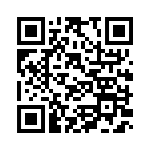 Jessica Griffin, the Principal of Logan Avenue elementary in Emporia, Kansas, has taught at the primary level and served as an instructional coach. She holds degrees in primary education, special education, teaching English as a second language and building-level leadership all from Emporia State University. She has presented at the local and state level on a variety of topics, including the implementation of trauma-responsive care within the school setting.
Jessica Griffin, the Principal of Logan Avenue elementary in Emporia, Kansas, has taught at the primary level and served as an instructional coach. She holds degrees in primary education, special education, teaching English as a second language and building-level leadership all from Emporia State University. She has presented at the local and state level on a variety of topics, including the implementation of trauma-responsive care within the school setting.
Learn more about Logan Elementary School by clicking or scanning the QR code.
Ms. Griffin: I’ve been in the public-school systems in Kansas for over 18 years as a certified employee. I started my journey as a student teacher here at Logan Avenue Elementary School. I taught in special education, and in a regular third grade classroom. After graduating, I began teaching here at Logan Avenue and I was hired as a first and second grade teacher. I did that for seven years and then felt like it was time to spread my wings and help others. I became an instructional coach at our school, and I worked with teachers teaching kindergarten to fourth grade. During that time, I also decided it was probably about time to start a Master’s degree. I was to gain knowledge and skills to become more proficient as instructional coach. After this I became a Principal at a fifth-grade centre – where I worked for three years. Finally, I transitioned back to the school where I originally taught and was an instructional coach, as their Principal. I’ve now been here for over seven years in this role and I’m also ESL endorsed as well as special education certified.
I have really felt a call from the time I was in college to serve the students who have more challenges in their learning. Students with special education needs or students who have English as a second language as a need. I really felt my purpose was to serve these students. I’ve always been a champion for the underserved students.
Logan Avenue Elementary School
Ms. Griffin: We have, hands down, the best school family that I’ve ever had the opportunity of working with. Our students, staff and families are all amazing. There are six elementary schools in our community, and we are one of the smaller ones. We’re a two-section school, so we have kindergarten through fifth grade in our building. We have about 250 students so we’re not terribly large. We have a very diverse student population. Our school building is located between two of the lowest income housing units in our community. We have a very high population of students who are on free lunches. We fluctuate between 70 to 85% of students that come to us from the low-income housing units. We also have about 60% of students that are of Hispanic origin and 30% that are English as a second language learners. Our special education population is higher than I would like to see it right now at about 35 students. My building is also the landing base for a specialised program in our special education cooperative that works with students who have emotional disturbance. I am the principal of that program as well.
We added a grant position this year called Communities in Schools and we have a site coordinator that helps provide tons of resources to help our families. They help provide anything from laundry detergent or dish soap or shoes or help getting students to a medical appointment. We don’t want any of those obstacles to stand in our families’ way of having their kids attend school. We work extremely hard to help families meet the needs – not just limit the support we provide to academic or behaviour support.
 School Breakfast Clubs
School Breakfast Clubs
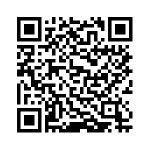 Despite being a high-income economy, Australia has a relatively high level of food insecurity. United Nations Children’s Fund (UNICEF) data on hunger and access to food shows that Australia ranks only 30th among other high-income countries, with more than one in six Australian children below the age of 15 living in a food-insecure household. This rate is considerably higher among children in Australia’s remote and very remote Indigenous communities.
Despite being a high-income economy, Australia has a relatively high level of food insecurity. United Nations Children’s Fund (UNICEF) data on hunger and access to food shows that Australia ranks only 30th among other high-income countries, with more than one in six Australian children below the age of 15 living in a food-insecure household. This rate is considerably higher among children in Australia’s remote and very remote Indigenous communities.
A large-scale study by Susan Hill and colleagues from Edith Cowan University examined models of school breakfast programs in Western Australian. The findings showed that all schools using the programs reported benefits for disadvantaged students. However, the social benefits of programs at the classroom and school level were more pronounced in schools that had adopted more integrated, whole school approaches.
Scan the QR code to learn more about the study’s findings.
Dr. Krishnamoorthy: The programs you have at the school indicate some of the challenges the students might be facing at school. Have your perceptions of some of the challenges facing students changed in your role as Principal compared to teacher?
Ms. Griffin: We often talk about Adverse Childhood Experience’s (ACEs) for our students. We estimate about 80% of our students at Logan Avenue have an ACE score of three or higher. There is a very high level of chronic stress that students experience – especially those living in poverty in our area. When living like this, the demands we place as a school on families may seem unreasonable to them. Its important to remember that such families are not ‘anti-education’. They are just ‘pro-survival’.

Our student’s come to school most days with a lot of worry, i and that can get in the way of their ability to function. We could have rich instruction being provided, but it becomes too hard for them to take it all in.
In my seven years coming back here as Principal, there may have been one or two kids in a classroom that would have a hard time that I’d be called to help with. By years three and four here, I was being called frequently. My counsellor was being called frequently, and the behaviours of the students were escalating from defiance, like “I’m not going to line up”, to “we’re not going to leave the classroom” to now seeing students tip over chairs, throwing and destroying things, to being physically aggressive towards others.
About three years ago I hit my wall as an administrator. I was left thinking – I don’t know what to do because everything that’s in my toolbox. All that I was trained as a teacher special education provider to use wasn’t working. The rewards and the punishments weren’t working. The traditional systems we had in place were failing. Our students were not feeling good about school. Parents didn’t feel good about what we were doing at school. I know that it was hard on our staff too.
That started the process of me looking for answers. I came across Dr. Becky Bailey’s work with Conscious Discipline and that changed my perspective. I ordered her book and spent an entire month reading, watching videos and learning everything I could. And now there’s science behind what’s happening for these students, and I understand it. Suddenly, I had so much hope in my heart that there could be a different way and we can learn to do things differently. It shifted everything in my world. I know my staff know about the challenges that our kids are bringing in with them. When you can look at it being grounded in science and knowing that there are different ways that we can respond. That changed the game forever for us.
 Conscious Discipline with Dr. Becky Bailey
Conscious Discipline with Dr. Becky Bailey
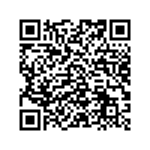 Dr. Becky Bailey is an award-winning author, renowned educator, and internationally recognised expert in childhood education and developmental psychology. She is the creator of Conscious Discipline, which has impacted an estimated 17 million children while inspiring and training more than 3.5 million educators and caregivers. Conscious Discipline is practised in over 73 countries with resource materials offered in 22 languages.
Dr. Becky Bailey is an award-winning author, renowned educator, and internationally recognised expert in childhood education and developmental psychology. She is the creator of Conscious Discipline, which has impacted an estimated 17 million children while inspiring and training more than 3.5 million educators and caregivers. Conscious Discipline is practised in over 73 countries with resource materials offered in 22 languages.
Check out our interview with Dr. Bailey in our companion book, Trauma Informed Education.
Click or scan the QR code to get access to the free book.
Supporting a New Disciplinary Policy
Dr. Krishnamoorthy: It seems common for educators to feel helpless and blame students and their families for misbehaviour. At times, there seems like prejudice about people from low socioeconomic backgrounds that maintains such views. This comes with resistance to change, and a loss of curiosity. How did you stay curious and encourage you staff to be curious about trauma-informed practices?
Ms. Griffin: There were a lot of moments where I thought…what in the world? I just hadn’t seen this level of misbehaviour. I hadn’t encountered students who didn’t respond to a reward system. When they did respond to a reward system, it was very short-lived, and it soon felt like it didn’t work anymore.
There was one moment that will forever stand out for me. I was in the school office with a first-grade male student. We had to go into lockdown as he’d destroyed his classroom. He ran through the building and flipped a very heavy table in our front office. I was trying to talk with him. He picked up the wooden doorstop that was holding the office door open and he threw it at my head with such force. Luckily, it bounced off the wall and went behind me. But at that moment, I thought, I don’t know what I’m doing. But I can’t keep doing this job in this way. It’s not working for me. I had a choice. I could either choose to try and figure out a new way of doing things, or I felt I had to leave the profession.
Unfortunately, I think for a lot of teachers, that feeling of hopelessness and helplessness about being unable to make things better comes on quickly in such situations, and it’s very overwhelming.
I feel like we’re losing teachers to burn out for those very reasons. The ways that we were raised as children; the we have parented; the way you’re taught in pre-service teacher programs does not preparing you for the challenges that our students are facing today. We’re not given the knowledge and skills to be able to come to work every day and know how to help them.
 Taking Care of Yourself as a Teacher
Taking Care of Yourself as a Teacher
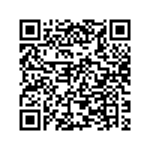 Teachers respond to mental health and trauma related concerns of students regularly. Teachers are often the first outside of family members to learn about student trauma and feel its effects. While the responsibility for the wellbeing of teachers lies with both school leaders and with the teachers themselves, educators can benefit from skills to manage these complex emotions and how to utilise personal resources and self-care strategies.
Teachers respond to mental health and trauma related concerns of students regularly. Teachers are often the first outside of family members to learn about student trauma and feel its effects. While the responsibility for the wellbeing of teachers lies with both school leaders and with the teachers themselves, educators can benefit from skills to manage these complex emotions and how to utilise personal resources and self-care strategies.
Click or scan the QR code to access a checklist of self-care practices from the National Child Traumatic Stress Network (NCTSN) [PDF].
Dr. Ayre: Thank you so much for sharing that story. As a teacher, I can completely relate to that feeling of helplessness. We lose many good teachers and principals from the profession because they feel this way. So how did you start that change process in the school? When you’re at that point where that little guy has flipped his lid and is throwing stuff, and you’ve done all that research about how to do things differently, how did you physically broach the subject of shifting thinking in a school?
Ms. Griffin: It started when I felt like I had the headspace to stop being so reactive and to not be in my own “survival” state of mind. I was able to do the reading and thinking about trauma-informed practice. I thought about what was possible at the school and how we might go about new ways of doing things.
When I was able to do that, then I felt like it was time to meet with my leadership teams within the school and share that knowledge. The leadership team included our positive behaviour support team who were also the key communicators within the school. I started to share what I’d been learning with them. We had visual resources around the room and I really tried to create an image of the ‘why’ to the staff first. Showing them how these new practices were aligned to what we’ve done already, and how it was a different way of approaching these challenges.
At this time, we also reviewed the data from the collective efficacy survey that I give to my staff each year. The data showed that we have 50% of teachers (at that time) believed they couldn’t motivate kids. They, 50% of our staff, didn’t believe they had the tools to be successful. To help the students with the most challenges. Clearly, that’s a problem. If half of our teachers are feeling like they can’t do anything to help our students, what disservice are we doing to these children?
We then looked at data on the students. That’s the data that shows the number of times we’re being called to help and support another teacher with a challenging student in the class. How effective is the system we’re currently using? How effective is it for the teachers? How effective is it for our students? Looking at this data, we could see that what we were doing is ineffective. That was a nice segue for me to bring in all the research and the wall charts I’d made to paint the picture of that there might be another way we can do this.
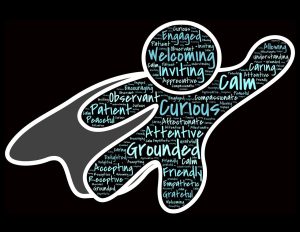
I was honest and vulnerable with what were embarking on with our leadership team. It’s probably going to be scary, and I can’t tell you all the answers right now. I’m going to learn with you, but would you be willing to go on a different journey with me? I shared trauma-informed practice books and bought a copy for everybody. The staff started reading that during the month of July. By the end of July, everyone agreed and said, “we’re in, let’s do this”. From then, I bought more books for everybody on staff, including the cooks, custodians, teacher aids, secretaries, all the teachers, everybody got copies. We also organized book study meetings that we held throughout the next school year where we met once a month. We reviewed chapters and watched different video clips to learn.
Right before school started, we put all these plans in place and we started moving away from certain practices – like an in-school suspension space, for when students are escalating and getting out of control. We let the students know we’re not going to do that anymore. I remember this sinking feeling. I remember thinking – “oh my gosh, this is a crazy idea”. I had several moments of self-doubt. I wasn’t sure if I’d led people down the right road. I then had this email from our assistant superintendent about this Principal in Derby who had done something very similar. I was thankfully connected to James Moffett, in Derby, Kansas, which is down in the Wichita area. I thought oh my gosh, okay. I’m not crazy. I have to go meet this person.
I connected with James in September of that school year. He was the one who really introduced me to the ACEs research and the science behind it all. He introduced me to Jim Sporleder’s work and then all our staff watched the ‘Paper Tigers’ documentary in October. That helped set the stage and that was really a tipping point for us because it’s hard to argue with science. You can’t argue with the neuroscience of what’s happening in the brain. Learning how the trauma and chronic stress and poverty all impact development. To me the hopeful part of such practices was understanding that student behaviour was a form of communication. When we understand this, we’re better placed to respond effectively on our end.
Be sure to check out our interviews with James Moffett and Jim Sporleder in this book.
We spent the first year learning and changing through our book study group. We problem-solved together. It was such a huge paradigm shift for people to see behaviour as a form of communication. To view those deficits, like we do academic deficits, was a huge shift. When we have a student that struggles to read, we don’t put them in the hall. We don’t send them to in-school suspension. We don’t shame them. We do, however, wrap support around them, and we give them more time and attention. Why would we not be doing the same thing if students struggle with behaviour? Why would we not be wrapping our arms around them and help them problem solve this challenge?
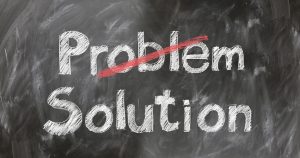
Dr. Krishnamoorthy: How do you explain what a trauma-informed approach is in education? And how is it different from anything you were doing before?
Ms. Griffin: We are creating a problem-solving, love-based environment. We are not a traditional school system based on fear and compliance. I feel that the most of our schools are set up on that very traditional model of fear and compliance that looks like, “you will do what I say, because I said, because I’m the adult”.“I feel that the most of our schools are set up on that very traditional model of fear and compliance.”
We aim to communicate to students, “I have empathy for you”. We really focus on psychological safety. We focus on connection with other students, and we focus on hope. We teach them that they have the power inside of themselves to rewrite their own story. This story is where you are right now, but it doesn’t have to be your story forever. We try to instil in the student’s that we care a lot about them regardless, and there’s nothing they’re going to do that will make us not care about them.“We teach them that they have the power inside of themselves to rewrite their own story.”
In the first year, it was so hard. The kids were like “whoa!”. All the adults are acting very different toward us. In year two, the climate and culture began to shift. I think it was in this year that it really dawned on the teachers that for the children to change, the adults in the building had to work on themselves first. That I must be able to compose and calm myself, before I can download calm or help anyone else in a situation. Once we do that, we’re better able to access the thinking parts of our brain, and to help that student in that moment. In these moments, the students see us model skills of compassion, calm and care in our interactions with each other. They see it in our interactions with the other students. The students pick up on that.
“….it really dawned on the teachers that for the children to change, the adults in the building had to work on themselves first. That I must be able to compose and calm myself before I can download calm or help anyone else in a situation.”The climate and culture shift had been huge in that two-year period in our school. When people come in to visit, they often comment that it feels safe – like you do at home. In our daily lives at home, with our families, there can be some rough times. But we still love each other regardless. In this way, at school, we want our students to really know we are here to help them, and we care about them. That is the bottom line.
School Climate and Culture
Dr. Krishnamoorthy: I think you can feel it when you walk into a school. We were at a school we work with on trauma-informed practices and we commented on how calmer it all felt from the last time we were there. The climate of the school had shifted. What are some of the practical things you did for this school to be more trauma informed?

Ms. Griffin: We do a lot of different things. We focus a lot on safety and connection. We have a morning message, and I lead that each morning. Every Monday morning, we gather together as a school family and we have all school family assemblies. The first Monday of the month we do things during that assembly that takes a little longer. For example, all students are given the opportunity throughout the school year to share a celebration with their school family. The celebration can be anything personal or school-related, the choice is theirs. We also celebrate birthdays, and new people to our school, whether that’s families, students, or staff.
Each month we have a specific self-regulation skill we work on, and we have a lesson that aligns with that skill each week. Each week, we set an activity to unite us, a focus area. For example, this week, we’re focusing on hope and goal setting. Every morning when I lead the message, I talk through those pieces. Our day doesn’t start academically, our day starts with connection. It starts with my announcement and then teachers have time where they can do a activity related to our focus area of hope or goal setting.“Our day doesn’t start academically, our day starts with connection.”
We also have a safe keeper ritual that guides everything that we do. We talk about our job at school is to keep it safe. And that’s everybody’s job. It’s not just Mrs. Griffin’s job. It’s not just the teacher’s job. Everybody has the job to help keep our school safe. We talk about being safe with our words and our bodies, and then our other job is to learn. That guides everything we do. Are we being safe? And are we learning? Are you being helpful? Or are you being hurtful?
We also really work to notice and focus on the positive things and the behaviour that you want. You don’t hear people say, “no running in the hall”, we say “walking feet, just like this”, and we model that for them. A lot of teaching is happening all throughout the day.“…making sure to give the kids grace and taking time to teach.”
Today we had a fire drill and we were coming back in from the fire drill and there was a class going to recess. I noticed a little boy had lifted the lid to the equipment box to get a ball out to take on the playground. There was a little girl there and her arm was in the equipment box too. He was in such a hurry to get outside, he let the lid go and it fell down on her arm. She started crying and he didn’t even realize. In that moment, I was able to say “oh my goodness, you wanted to get a ball and get outside very quickly and in the meantime, the lid fell on so-and-so’s arm. Can you see that she is hurt”? And the little boy said “it was an accident”. I said, “I know that was an oops. Next time, can you set the lid down carefully just like this”? I was making sure to give the kids grace and taking time to teach . I could just have said “look what you did, you made that person feel horrible. You need to go to the office and sit out of recess”. We don’t operate like that anymore. We’d never take away recess. That is not even a negotiable consequence ever for a student. We really focus on consequences being about problem solving, and an opportunity to teach. That’s what discipline is. It’s an opportunity to teach. It’s not about punishment.That’s what discipline is. It’s an opportunity to teach. It’s not about punishment.
We do daily greetings in the classroom to help build that safety and connection with the students. Well-wishing is another huge part of our day that has really been eye opening. It allows both students and staff the opportunity to let people know about how they are feeling. To share what is worrying them or to let others know they are going to be vulnerable. I’m going to share that with my peers and just ask them to send a positive breath into the world for that person. If a student is really struggling, we’ve taken away the stigma in talking about that. The children recognize this. They say “oh,so-and-so is really having a hard time right now, we should send that person a well wish”, and it just brings calm to that situation. 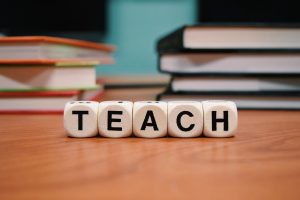
Dr. Krishnamoorthy: The whole concept of slowing down and teaching kids sounds simple, but it’s very time consuming and needs you to be quite mindful in many ways. I’m sure people hearing this would think, “oh yeah I do that”. But I think it happens a lot less that we think it does. It’s not always what you get trained in as a teacher, and it’s not something that comes naturally to a lot of adults. How did you reinforce that behaviour amongst the staff?
Ms. Griffin: Initially there were some the early adopters. The ones that are like, “yes, let’s go!” There were also definitely some that were laggers. The ones that sit back and think, I’ll wait and see how it goes for everybody else. We also had some staff that were the ones throwing the rocks in your boat. I think about where they were on their own journey, and like I said previously, it starts with yourself first. It’s hard to look at your own history and past. Your own adversity and trauma. To understand how its shaped you, and how it impacts your work.
It’s hard to identify what our own personal triggers are and how we cope when we’re triggered as an adult. To understand how we can pass on a healthier way of coping to children. Typically, in schools, we feel like we have it together. We’re educated and we’re fairly composed. I like to give lots of analogies to my teachers to help them understand some of the things we’re teaching and why. I’ll ask them things like, what happens when somebody cuts you off in traffic? How do you respond? What we do in these moments becomes an example for our own child – the one that’s sitting in the backseat of the car. In those moments they learn about how to react when something doesn’t go their way. They then bring these ways of coping to class and it becomes the way they react to not having the yellow crayon. Their window for tolerance is so tiny because their brain is always in survival mode. The fact that they didn’t get the yellow crayon doesn’t seem like a big thing to us, but it’s huge to them.
 Window of Tolerance
Window of Tolerance
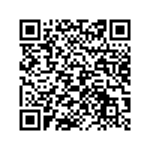 Popularised by Prof. Dan Siegal from UCLA School of Medicine, the Window of Tolerance refers to optimal zone of “arousal” for a person to function in everyday life. When a person is operating within this zone or window, they can effectively manage and cope with their emotions. For children who have experienced trauma, it is often difficult to regulate emotions and the zone of arousal where they can function effectively becomes quite narrow.
Popularised by Prof. Dan Siegal from UCLA School of Medicine, the Window of Tolerance refers to optimal zone of “arousal” for a person to function in everyday life. When a person is operating within this zone or window, they can effectively manage and cope with their emotions. For children who have experienced trauma, it is often difficult to regulate emotions and the zone of arousal where they can function effectively becomes quite narrow.
How can the Window of Tolerance be used to help students in your class? Click or scan the QR code to read the chapter on the Window of Tolerance from the book, Trauma Informed Behaviour Support by Kay Ayre and Govind Krishnamoorthy.
We’re at the point now where I can say to staff, we expect things out of our children that we as adults aren’t even doing or we’re not doing well. How fair is that to expect a 6, 7-, 8-, 9- or 10-year-old to do things that you don’t do? Like being quiet all the time. When you go to a staff meeting or you go to a day professional learning, do you sit there quietly all day? When you go to the bathroom with your girlfriends, are you quiet in the bathroom? When you go to lunch, do you not talk to your friends? Let’s be realistic about what the expectation is. Let’s give them grace because they are 6, 7, 8, 9, 10-year-olds. And a lot of them are coming to school and they’re already really stressed and heightened.
I will say I’ve lost some folks along the way because they just couldn’t get behind the change. That was okay too because that’s where they are in their journey. I want them to be happy in their workplace and what they’re doing. I don’t really like to have rocks thrown in our boat. I don’t want to sink or have anybody else sink in the process of change.

Dr. Ayre: It’s just so critical that a principal gives you permission to have space, to do the connections. To focus on instilling hope. Often there is such pressure on the literacy and numeracy data. When you’ve got all the academic outcomes driving you all the time, for somebody to say, don’t start on maths this morning, talk about hope and connection and making the students feel safe. As a teacher, it must help you believe that it’s going to be okay if I do this. You really need the security of the principal’s commitment as a teacher. That is such a critical strategy. If the teachers don’t feel safe to take the risk of not doing the academics and putting that emphasis on social emotional learning, they just can’t make the shift. I believe it is the key to success or not as a whole school.
Ms. Griffin: Sometimes I feel like I’m banging my head against the wall because what I see happening is teachers are working harder than ever. They’re using best practice and research-based materials, but our needle isn’t moving. In fact, it’s going in another direction at times. We’ve got tier two and tier three services and kids are getting more support academically, and yet we’re still not moving forward in terms of social-emotional and academic outcomes. You have to stop and ask yourself, “what’s the one thing we haven’t changed?” The answer is: we haven’t changed how we manage the classroom. We haven’t looked at social emotional learning. We haven’t been brave enough to try something different because we are worried it will make it worse.
I’m so excited because right now, when our academic data came in, my third graders scored phenomenally. I kept telling my staff, I don’t care about the test. If we don’t take care of the social emotional piece, we can have the most beautiful instruction in the world laid out and the students are not going to be able to access it. We’ve got to get our students to a point of truly feeling safe. Students must feel connected to each other, to their teachers, and that we are a family. People work hard for their families. They protect their families, and they are loyal to their families. We’ve got to create that in the school. And with trauma-informed practices, it works. Both our behaviour and our academic data are improving. It really has paid off for us.
Dr. Ayre: Tell us about your data. What did you find?
Ms. Griffin: There has been a huge shift in our behaviour data. We started tracking just our crisis prevention calls and we had about 137 calls in a year in our building. If we get a call, that means behaviour is so intense that the teacher can either no longer teach because it’s so disruptive, or it’s unsafe to themselves and others. After implementing the traum-informed practices, we had 15 of those calls. So the shift is huge.
Last year we were getting a lot of safety calls where students were intensely upset. This year there’s been a shift and we’re not getting those same safety calls. This year we have more of what we call our blue calls – where students are not in crisis but having a really rough time and can’t get it together. They need time away. They need maybe a snack. I don’t know how much money I spent on granola bars and cheese sticks this year, but if that’s what it takes, we’ll do it.
Our collective efficacy staff survey data, , we’ve previously had 50% of the teachers who actually thought the kids are motivated and 50% didn’t feel like they had the tools to do the job. After two years of trauma-informed practices, we were up to 95% where teachers feel like they had the tools to do the job. That 5% was one teacher who didn’t feel that kids were motivated or didn’t feel that they had the right tools in their toolbox. It’s not perfect, and every day is not a 10/10. But what that data tells me is that teachers are feeling like they do have tools in their toolbox.
It’s an exciting time. We have the potential to make such a huge impact. I think sometimes that’s my frustration. Why are we only learning about trauma now? Why isn’t this spreading like wildfire? Why isn’t it in teacher service, pre-prep programs? We’ve got to do a better job of spreading the word. The exciting thing is seeing the adults change and then how the children respond to that change. Even the parents and the families are sharing things with us they would have probably never shared before. They now feel safe and connected to the school community and know that we care deeply about their children, and we’re here to help.“The exciting thing is seeing the adults change and then how the children respond to that change.”
Dr. Krishnamoorthy: Do you have any stories about students who have moved to the school where you’ve seen positive change? What impact has this had on yourself and for the teachers in terms of how you’ve all grown from the experience?

Ms. Griffin: I’ll tell you about a student in third grade. When the student was in kindergarten and in first grade, we were not using trauma informed practices in our building. We had a very traditional in our approach to behaviour management. This student would frequently abscond from his classroom. He would destroy his own property. Lunchtime was horrible for him. He would go in the cafeteria and take his shoes off. He would throw his shoes and start running around. I don’t know how many ISS’s (in-school suspensions) this little person sat in or how many times I called his parents. His mother would often be in tears. When we made the shift to using trauma informed practices last school year, we started tracking his behaviour.
We started tracking when we were getting calls about him during the day. Looking at the data, we started asking questions. What was happening during that section of the day? What was his behaviour telling us? We were able to identify, that for certain subjects – PE, music, library and art – were times of day that were very challenging for him. There’s a lot of transition and you’re moving between several teachers at a time.
Now what are we going to do differently to help him? We started talking with him specifically about being able to identify what brain state he’s in and being able to identify and articulate what emotion that is. We asked him what it feel like. “Where do you start to feel that?” He would respond with, “I can start to feel it in my hands”. If you watch him in class, you’ll see his fingers start to move. This was his early warning sign. Once this happens, his shirt comes up, and he starts chewing on the collar of his shirt.
You can just imagine this little child – sitting in class with all his anxiety. It’s just like a pot that boils. He reaches a certain point, and it’s too much for him and he starts to feel he has to leave the room. We talked with him about what would help him when that feeling’s starting to come, and he said “I just need to run. I just need to go”.
We put in plans for him to have scheduled sensory release times. In these times, he could run and be physical. When we did this, there was pushback from some staff that said, “well, he acted out and now you’re just letting him go jump rope”? Or “you’re just letting him jump on the trampoline”? Or if it’s a nice day, even in the winter, if he says that he needs to run, he comes to our office, one of us puts on our coat, and we go outside, and the little guy runs back and forth from the building of the fence line until he is tuckered out. That pot that’s always simmering for him – the running helps bring that boiling pot back down to a simmer instead of that raging boil. Then he doesn’t break his belongings and he’s not throwing his shoes. He’s able run for three minutes and then come back in and re-join his third-grade class this year and access his learning. After introducing this strategy, academically, he progressed dramatically. His social emotional development also progressed. We stopped hearing the baby voice, and we stopped seeing the absconding behaviours.
![]() Trauma-informed Strategies for Educators [7:24 mins]
Trauma-informed Strategies for Educators [7:24 mins]
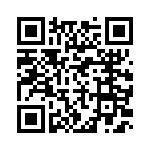 Research shows that traditional behavioral modification techniques and full reliance on rewards and consequences are often ineffective with the students who need it the most. In this video, Dr. Bruce Perry lays out several easy-to-implement strategies for teachers and their classrooms, resulting in a significant impact on the overall social, emotional, and academic functioning of the students.
Research shows that traditional behavioral modification techniques and full reliance on rewards and consequences are often ineffective with the students who need it the most. In this video, Dr. Bruce Perry lays out several easy-to-implement strategies for teachers and their classrooms, resulting in a significant impact on the overall social, emotional, and academic functioning of the students.
Click or scan the QR code to watch the video.
Learning about trauma has changed me and my staff as people. Staff will often talk about how they are a better mother or better wife. I have a 14-year-old daughter. Sometimes, we go head-to-head. She came home one day in winter, and she had gone to try out for the wrestling team at the middle school. My husband was a wrestler through college and we say “No way, not doing it, not going to happen”. Of course, she then she stomps upstairs and I hear her throwing things around. In my old brain, I went right to my trigger spot, because she knows that pushed my buttons. I’m thinking, “how dare you! You should be grateful. What are you throwing around up there?”
Instead, as I was going up the stairs to her bedroom, I was thinking to myself, “you are triggered right now, you’ve got to breathe before you walk into that room” and “you’ve got to notice and not judge her behaviour”. I walked in and took a breath. I just looked at her and I said, “you seem really upset right now what’s going on”? And it was like the attitude just melted away and she shifted herself to a calmer state. We then had a great conversation and I realised she had some good reasons why she wanted to do this. At the end of the conversation I said, “well you’ve won me over, you’ve got to win dad over”.
In my old way of thinking, that would have been an ugly confrontation between my daughter and I. It didn’t have to be that way. Its helpful to recognize it when it’s happening and then being able to change it, is helpful. I think the empathy that you have for others in the world and in your day-to-day interactions, helps you look at people differently. If somebody’s being rude at the checkout at the store, or to the waitress, I look at them now and think “wow, what’s going on in their life that is causing that?”
With parents that come into the school, when they’re angry or they’re upset, you don’t judge them right away. You stay curious and wonder “wow, you got a lot going on, tell me about that. What can I do to help you?” This automatically disengages or disarms that anger and that hostility. What if we did this more often in the world? How much better might it be if we all met each other with love and positive intent instead of judging and negative intent.
Self-Care Practices
Dr. Krishnamoorthy: It always strikes me that the real privilege of working with some of these children is that it just pushes us to be better people and to see the world differently. All that self-awareness sounds amazing, but it must sounds be exhausting at times. How do you take care of your staff through these changes?
Ms. Griffin: We are constantly trying to find ways to do this. I know we’ve got to do a better job of that. When I was at the resilience conference in Kansas City just a few weeks ago, one of the sessions I went to was on self-care. Initially I wasn’t going to go – but I was glad I did. The speaker shared his own vulnerability – about his own personal struggles and not taking care of himself, working so hard to meet somebody else’s needs. Listening to him, I thought I really need to pay attention to this and slow down.
I found some valuable information that we’ve brought back to our faculty. We’ve worked on helping staff identify activities they can do that lasts two to five minutes during their workday. Activities that help calm them. To ensure their window of tolerance isn’t getting shorter and shorter all day. So, they are not completely spent after a day’s work.
We also find ways for staff to connect with other staff. It can be through catching up one on one with each other, or finding someone to say, “Hey, I’m in the emotional state right now”, “I can’t have the conversation right now”, or “I need somebody to come tap out with me right now”. For staff to do this and not be judged. I had a teacher today in fifth grade where she said, “I need a break right now because we’ve had a pretty interesting situation this morning”. I don’t see this as a sign of weakness. She will know I’m not judging her. There is permission to say “Hey, I need a minute”, “I need to go take a walk outside”, or “I need to call my spouse” or “I’m going to FaceTime my kid”. That’s okay.
We also try to make time to connect outside of the school. Taking people to different conferences and connecting with educators in different school districts, within our state or in different areas of the country. Last summer I was able to meet some folks from New Zealand and I think that reaffirms the work we’re doing.
Future Direction
Dr. Krishnamoorthy: What are you currently curious about in your work? What questions do you have in your mind at the moment?
Ms. Griffin: Right now, one of the biggest things, is self-care. That’s something I feel like I need to be doing more reading and thinking about, so I can better help my people and myself.
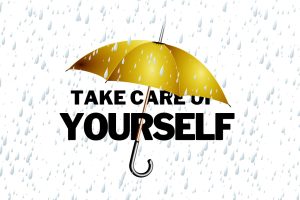 As a faculty, we’re also talking about school redesign. If we could create school to be anything we wanted it to be, what would it look like? Thinking out of the box of traditional grade level structures, based upon age or based upon standards. How can school better meet the needs of the whole child? I feel like we’re doing a great job on the path that we’re on right now with the social emotional piece and we will continue to refine that and connect with others and work to improve. When we look at the whole system, how are we really set up to celebrate the brilliance of every child? How do we maximize our system to focus on their strengths and not their deficits? For example, you’re not good at this, so you’re going to do more of it. That breeds a negative sense of self-esteem in children.
As a faculty, we’re also talking about school redesign. If we could create school to be anything we wanted it to be, what would it look like? Thinking out of the box of traditional grade level structures, based upon age or based upon standards. How can school better meet the needs of the whole child? I feel like we’re doing a great job on the path that we’re on right now with the social emotional piece and we will continue to refine that and connect with others and work to improve. When we look at the whole system, how are we really set up to celebrate the brilliance of every child? How do we maximize our system to focus on their strengths and not their deficits? For example, you’re not good at this, so you’re going to do more of it. That breeds a negative sense of self-esteem in children.
“How are we really set up to celebrate the brilliance of every child?”
We are also looking at other people’s models and connecting with other schools across the state, country, and worldwide. We want to learn what is happening in places of the world facing similar challenges. Thankfully we’re in a state with the commissioner of education right now that has given us the blessing to do that. Our school district is really looking to embrace that. Now we’ve seen the success we’ve had, and we just want to continue to help our children and our families grow.
Chapter Summary
- Trauma-informed practices requires schools to be equipped to meet basic needs of students such as food, clothing, and stationery. There is research to support the use of ‘Breakfast Clubs’ – offering free breakfast for students.
- Introducing changes in school practices can be daunting – and requires a collaborative approach with staff and the school community.
- Developing a whole-of-school approach to implementing trauma-informed practices can result in improvements in school climate.
- Using data about students across the school day can help plan and implement specific strategies to support students.
- Helping teachers care for themselves is an important part of delivering trauma-informed supports in a sustainable manner.
- Leadership in the implementation of trauma-informed practices is paramount. It is the best predictor of successful implementation.
References
Ayre, K. & Krishnamoorthy, G (2020). 3.5 The window of tolerance. In Trauma Informed Behaviour Support: A Practical Guide to Developing Resilient Learners. https://usq.pressbooks.pub/traumainformedpractice/chapter/3-5-the-window-of-tolerance/
Ayre, K. & Krishnamoorthy, G. (Hosts). (2018a, June 07). Spotlight: Logan Avenue Elementary with Jessica Griffin [Audio podcast episode]. In Trauma Informed Education. SoundCloud. https://soundcloud.com/trauma-informed-education/spotlight-logan-avenue-elementary-with-jessica-griffin?in=trauma-informed-education/sets/expert-interviews
Ayre, K., & Krishnamoorthy, G. (2018b, September 2). Conscious discipline with Dr. Becky Bailey. In Trauma Informed Education. University of Southern Queensland. https://usq.pressbooks.pub/traumainformededucation/chapter/conscious-discipline-with-dr-becky-bailey/
Hill, Susan M., Matthew F. Byrne, Elizabeth Wenden, Amanda Devine, Margaret Miller, Henrietta Quinlan, Donna Cross, Judy Eastham, and Miranda Chester. “Models of school breakfast program implementation in Western Australia and the implications for supporting disadvantaged students.” Children and Youth Services Review 145 (2023): 106770.
Moxley, K. (2022). A guide to mental health for early years educators. Putting wellbeing at the heart of your philosophy and practice. Routledge.
National Child Traumatic Stress Network. (2018). Taking care of yourself [Fact Sheet]. https://www.nctsn.org/sites/default/files/resources/fact-sheet/taking_care_of_yourself.pdf
National Center on Safe Supportive Learning Environments. (n.d.). School climate survey compendium. U.S. Department of Education. Retrieved 31 August 2023, from https://safesupportivelearning.ed.gov/topic-research/school-climate-measurement/school-climate-survey-compendium

